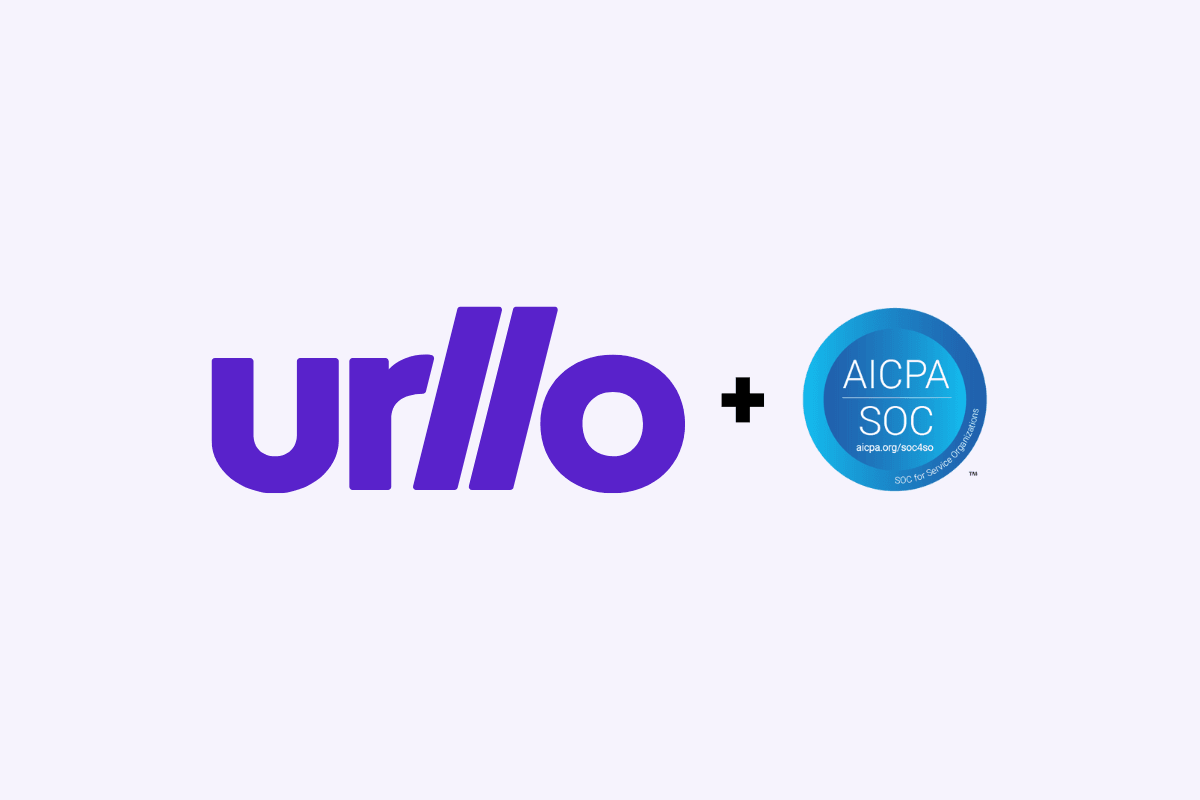If you've spent any time in marketing circles lately—on LinkedIn, in team meetings or reading trend reports—then you’ve seen the headlines: “Google Search is dead,” “LLMs are taking over” or “Traffic is vanishing overnight.” The reality? It’s far more nuanced. And for marketers, that nuance matters.
Recent data paints a mixed but increasingly urgent picture:
- According to Bain research, 80% of consumers now use AI-generated content for 40% or more of their searches, raising questions about Google's long-term dominance (bain.com).
- Google's rollout of AI Overviews may lead to up to 25% declines in organic traffic, according to publisher concerns (MarketWatch).
- Case studies show traffic from AI tools like ChatGPT and Perplexity is still modest, but growing as a new discovery channel (leannewong.co).
I recently had the pleasure of joining the urllo expert series to break down how generative AI and large language models (LLMs) are reshaping search, SEO and brand strategy. Here's what I shared. And what I think every marketing team should be thinking about right now.
Search behavior is fragmenting
Let’s get something straight: Google isn’t going anywhere.
Rand Fishkin broke down the numbers in this LinkedIn post. ChatGPT sees around 37.5 million “search-like” queries a day. Google? Around 14 billion per day. That's less than 0.3% market share for ChatGPT. Despite the hype, traditional search is not being displaced—it’s being augmented.
The shift isn't about less search; it’s about different expectations. Users are increasingly expecting answers, not just links. This means SEO isn’t dying—it’s evolving. We’re moving from link findability to answer inclusion.
Rather than an exodus from Google, we're seeing layered and fragmented user behavior. People use LLMs and traditional search engines in tandem, choosing based on complexity, trust, or urgency. This means your SEO strategy can't be single-threaded. You need to ask: is your content findable in both traditional and generative environments?
Influence without control
In the traditional search era, marketers had full control over their user's website experience. They carefully crafted every word on a page, decided on the sequence of information, set the flow of information from the top of the page to the bottom and outlined clear calls to action. The user experience was tightly managed—from the visuals to the copy to the conversion flow.
But in the LLM era, that level of control is gone. Now, large language models synthesize content from your site and third-party sources, user-generated content and forums. The words representing your brand are not necessarily the ones you wrote—they’re being selected, reordered and rephrased by AI. Your brand narrative is being assembled algorithmically, often without your direct input.
In this new reality, marketers have to adopt a PR mindset. You can no longer write every word the way you once could. Instead, your job is to shape perception and influence coverage—even though you’re not the one writing the final output.
Another mindset change for marketers and SEOs: you don’t just want to be included in AI-generated answers—you want to be positively represented. To support that effort, traditional SEO metrics like keyword rankings and organic traffic are no longer enough. Marketers now also need to monitor:
- Where and how your brand is cited in LLM outputs.
- The sentiment associated with those citations.
- Which formats and topics are generating engagement.
These new KPIs apply across both branded and non-branded queries, and they're essential for understanding how your brand is being represented in LLM-driven outputs.
Generative search isn’t a one-time play. It’s a living ecosystem, and the brands that adapt continuously will be the ones that earn trust, build relevance and shape the narrative in their category. That’s why it’s critical to build an always-on system for listening. Generative search changes fast. And so should your strategy.
Monitoring visibility and sentiment in generative search
The landscape of SEO tooling is rapidly evolving. Familiar names like Semrush and Ahrefs are adapting with new AI toolkits and features aimed at generative search visibility. But newer players are emerging with more specialized capabilities:
- Revere – Helps brands track how often and where they appear in AI-generated answers across LLMs like ChatGPT and Gemini.
- Brandlight – Focuses on sentiment analysis and representation in generative outputs, giving insight into tone and positioning.
- Profound – Offers in-depth visibility reporting and monitoring for branded and non-branded terms across LLM interfaces.
- Bottle Trail – Tracks citations and source links across AI chat interfaces to help brands understand where their content is being referenced.
Use these tools to monitor LLM visibility and tone in real time. Let those insights drive updates to your content strategy, FAQ pages, product messaging and earned media priorities.
We're witnessing the emergence of a new discipline aimed at optimizing how brands appear in AI-generated responses across tools like ChatGPT, Gemini, and Perplexity. This practice doesn’t yet have a universally accepted name—some refer to it as Generative Engine Optimization (GEO), while others call it Large Language Model Optimization (LLMO). Regardless of the label, the goal is the same: to ensure your brand is visible, accurately represented and positively framed within generative AI outputs.
Tactics that are working today
At Spark Novus, we work with forward-thinking marketing organizations, from fast-growing startups to global brands. And across those teams, we’ve identified consistent patterns in what’s working—and what’s not—when it comes to generative search. Below are five core tactics that are delivering real results right now.
Beyond keywords to semantic understanding
Traditional SEO has always been keyword-driven. But generative search is different. LLMs don’t just look for exact-match phrases—they look for semantic understanding: the relationships between ideas, the depth of explanations, and the context behind intent.
To compete, marketers must shift their strategy toward concept-driven content. Think less about ranking for “best CRM software” and more about understanding the full journey of someone evaluating CRM tools, including integration questions, pricing logic and post-sale support.
Write for people who are asking “why” and “how”—not just “what.” The better your content captures nuance and intent, the more likely it is to be pulled into synthesized AI responses.
Subject matter expertise and topic authority
LLMs reward depth over breadth. Brands that establish clear, consistent topic authority based on authentic subject matter expertise are far more likely to be cited in generative answers.
Start by identifying 3–5 focus areas where your team brings genuine knowledge and perspective—what problems do you solve better than anyone else? Then build concentric circles of content around each one:
- urllo, for example, specializes in URL redirection for brand experience continuity. The surrounding, concentric topics where their customers often operate include: SEO, domain consolidation, cybersecurity, domain strategy & management, domain migrations and website rebrands.
- A B2B SaaS brand focused on secure onboarding might center their expertise on access management. Concentric topics could include zero trust architecture, SOC2 compliance, multi-factor authentication and secure app provisioning.
- A retail analytics firm might anchor its authority in point-of-sale insights, with concentric topics like omnichannel performance, retail forecasting, shopper behavior and in-store analytics tech.
These concentric topic areas help brands define the ecosystem they want to be associated with—ensuring they show up in broader, context-rich discussions that LLMs are increasingly synthesizing.
This structure helps search engines and LLMs associate your brand with specific areas of expertise. But just as importantly, it helps your audience trust that you're a true authority—someone worth listening to. In the LLM era, that trust and clarity are key to visibility and influence.
Keep the human in the loop
AI makes it easy to generate more content. But more doesn’t equal better.
Your brand needs to balance scale with credibility. That means:
- Training your LLM prompts on brand voice and ICP pain points.
- Having SMEs guide topic ideation and validate outputs.
- Using editorial reviews to ensure factual accuracy and tone alignment.
One important reason for this: LLMs almost never say “I don’t know.” When asked a question, they’ll attempt to generate an answer regardless of how confidently they understand the topic. If your brand doesn’t provide reliable, high-quality content to feed these systems, LLMs may pull from inaccurate or low-trust sources—and hallucinate.
To protect your brand narrative, it’s critical to ensure LLMs have access to clear, factual and useful information that aligns with your audience’s real questions and decision-making moments. Without a knowledgeable human checking the facts, hallucinated answers can spread fast.
That’s why keeping the human in the loop is essential. At Spark Novus, we facilitate this across all our clients: while AI can help you scale content, subject-matter experts must be involved in shaping prompts, reviewing drafts and guiding how content gets used. Without that human oversight, brands risk publishing inaccurate, off-brand or even legally risky material. The most successful teams we've worked with use AI to accelerate—but always with humans steering the wheel.
Go deep on video
LLMs like Gemini, Perplexity and ChatGPT are becoming multimodal, capable of interpreting and generating insights from text, audio and video. And yet, many marketing teams still avoid video because it's historically been difficult and expensive to produce.
But that’s a missed opportunity—because video is also the most engaging format across social media and other digital platforms. If you want to earn attention, build connection and signal credibility, video remains the most powerful tool in your content arsenal.
The good news: creating and repurposing video content is more accessible than ever. With AI-assisted tools, even resource-constrained teams can build a video presence:
- Use tools like Descript, Parmonic or Opus Clip to turn long-form recordings into short, social-ready clips.
- Convert transcripts from webinars or podcast interviews into blog posts, email campaigns and SEO-rich articles.
- Use text-to-video platforms like Pictory or Synthesia to quickly generate explainer videos from written content.
- Turn slide decks into narrated video walkthroughs using AI voiceovers and animation tools.
These tactics allow marketers to transform existing content into richer media formats without starting from scratch every time. Multimodal presence isn’t about doing more—it’s about showing up smarter, and making sure your best thinking travels further.
Don't chase shiny objects
The most common mistake I see CMOs make? Jumping into new tools before defining strategy. Instead:
- Identify your North Star value drivers. These should align with core business goals—whether that's driving revenue, improving efficiency or deepening audience engagement. This is a critical mindset shift to focus on real business problems that need solving, rather than chasing new technology. Often CMOs come to Spark Novus saying, "we need an AI strategy." My next question is: "an AI strategy to do what?" There are thousands of new AI tools on the market. Without a clearly defined problem to solve, AI can become a distraction rather than a driver. Starting with a business problem is the only way to ensure your AI efforts are strategic and aligned with outcomes that matter.
- Align AI use cases to those drivers. This helps avoid chasing novelty for novelty’s sake. Many companies have tried out half-day AI hackathons that result in 100 potential AI use cases or applications. But success comes from narrowing that list to a small set of use cases that truly move the needle aligned to the value drivers. A brand we work with recently faced a decision between two very different AI use cases: one focused on driving new revenue through AI-assisted outbound prospecting, the other on cleaning up and reclassifying a massive backlog of outdated marketing collateral in a Digital Asset Management (DAM) tool. While both were valuable, the revenue-generating opportunity tied more directly to their core value driver of growth. This kind of clarity helps prevent teams from spreading themselves too thin and ensures that AI is being deployed where it will have the greatest impact.
- Choose tools that serve the strategy—not the other way around. The market is flooded with new platforms, but adoption without alignment leads to waste. When we work with CMOs and their marketing teams, we follow a very specific process: define your value driver, choose the right use case to support that driver, then evaluate tools that match both. Different tools match different outcomes, use cases, budgets, team sizes, and so on. The question isn't "is this a good tool?" It's "is this the right tool for our goals, our use case and our business strategy?"
This mindset helps filter the noise, avoid shiny object syndrome and ensure AI investments are truly in service of business outcomes.
Strategy, structure and a human touch
The rise of generative AI and LLM-powered search doesn't mean the end of SEO—it means the beginning of something more complex, and in many ways, more strategic. Marketers now need to think beyond keywords and links. Visibility in AI-generated responses depends on credibility, relevance, semantic depth, and sustained brand authority across an increasingly multimodal landscape.
If there’s one overarching takeaway, it’s this: keep the AI loop human-led. From defining value drivers and prioritizing AI use cases, to evaluating tools and validating outputs, human direction and oversight remains essential. LLMs will attempt to answer any question—whether the input data is correct or not. Without trusted content and human-guided context, hallucinations become inevitable.
Strategic clarity is everything. Start with the business problem. Let that guide your use case selection. Then—only then—choose the right tools that align with your goals, budget and team structure. This sequence, consistently applied, separates high-performing marketing teams from the ones chasing every shiny object in the AI ecosystem.
To learn more and explore these ideas in greater depth, you can listen to the full interview at the top of this article.
Want to dig deeper?
Read the first-ever usability study of Google’s AI Overviews.







.png&w=2560&q=88)

.png&w=2560&q=88)







